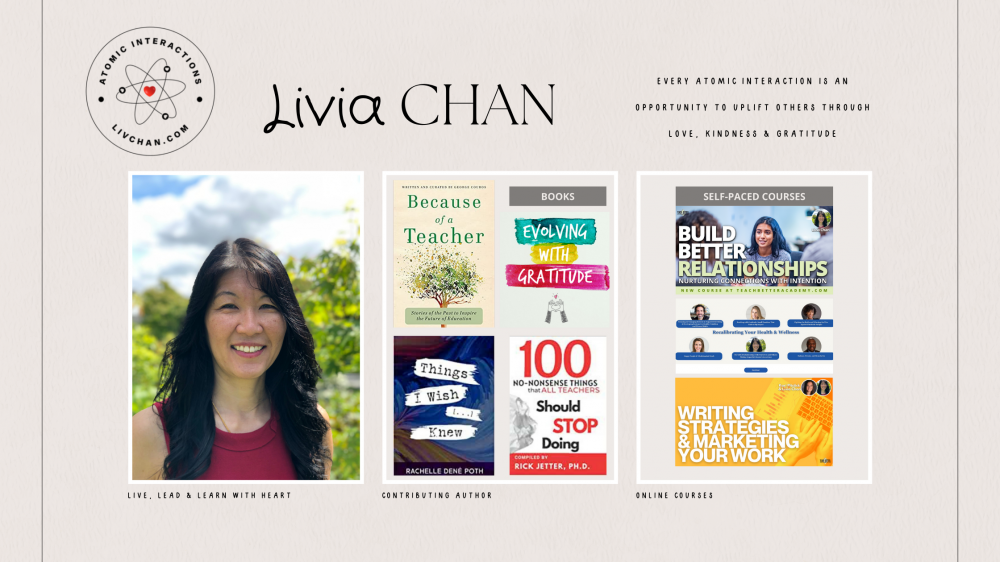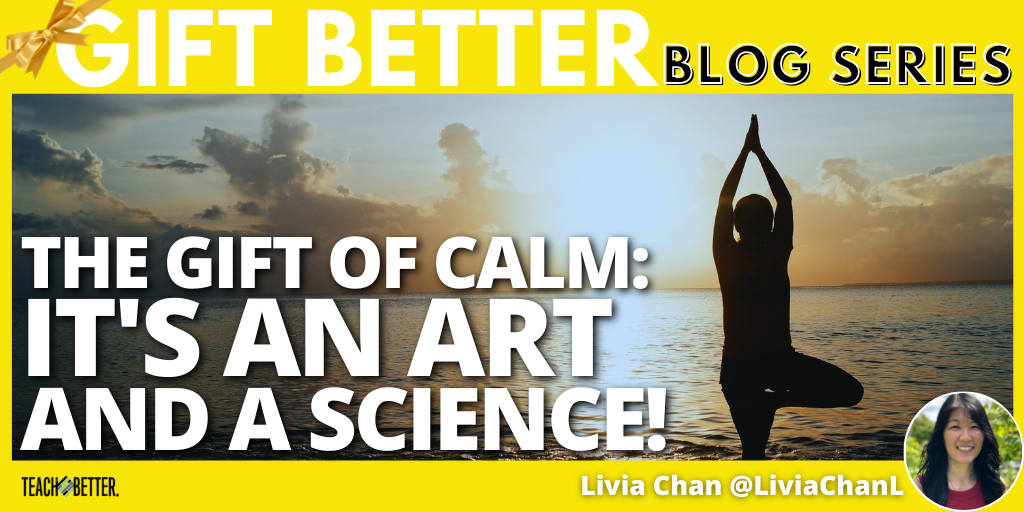
TL;DR:
- Control and clarity: With self-discipline, we can control emotions. Have the clarity to see that some things are out of our control.
- Appreciation and attitude of positivity: Be grateful for what you have and choose to be positive.
- Live and learn: With life experiences, you can see there are things out of your control. Learn from it. Children can learn by watching adults show calmness.
- Mindfulness: Be able to see the situation as a moment in time.
For decades, people have used similar words to describe me. I hear the same words over and over again. If I were to create a word cloud with these words, some of the largest and boldest words would be: kind, positive, caring, and calm to name a few. I learned to listen and pay attention to the many humbling words shared about me and started to truly see this as my authentic self. It’s what I practice in every interaction, every day. If so many people used these words over decades with consistency, it affirms that I am living in alignment with my core values and beliefs!
I originally called this post the Art of Calm because it is something you can enjoy, improve, and develop in your own way. No two artists approach the same canvas or materials with the same perspective or ideas. Every artist has their own preferred set of tools, viewpoints, and styles of creativity. Teaching is very much an art. Being calm and staying calm is an art but can be a science too like a formula to be followed.
Here are some things that help me stay calm:
Control and Clarity
If I can practice patience and self-discipline to control my thoughts and emotions, I can choose how I respond. I can choose to be calm.
Clarity allows my mind to quickly process, “What is truly in my control and what is out of my control?” In order to stay calm, I choose to accept that or at least I try. I do not prefer to worry or deeply entertain things out of my control. Instead, my energy goes to being calm because I know I can think and feel better when I am calm.
I have had many life experiences that helped me learn how to be calm. Here are some memories of staying calm. When I was 25, my best friend was in the ICU for over two weeks. I went to the hospital every day to see her and support her family even after she passed. This forced me to dig deep to be the rock they needed. We had to stay calm when working in my family’s Chinese restaurant kitchen during stressful busy nights. As a ringette coach at the AA level, we had to stay calm during big competitions. These examples have given me opportunities to train my brain to be calm so I can think and act with clarity.
When my emotions need to be controlled, I first remind myself to just breathe.
“It’s a miracle we can breathe. There’s power in the way that we breathe.”
– Breathe, Maverick City Music
When I breathe, I pause. I can control my breath. I can breathe deeply. Then I can be in the moment to think with more clarity to assess the situation. What do I know? What do I notice? How do I feel? What are my options for how to respond?
When I have clarity, I can have patience and optimism. I always know that no matter what is happening, this moment will not last forever, and will get better. Getting caught up in the storm doesn’t serve me. With life experiences and trust that the situation will eventually simmer and improve, I can feel some control over the situation and find the science of calm I need.
Appreciation and Attitude of Positivity
There are a few things at the very core of my being as I live and lead with my heart. Two of these are gratitude and positivity.
I found that having a deep rooted heart of gratitude has helped me stay calm over and over again. When things out of our control happen, I’ve learned that by thinking about what I am grateful for helps me cultivate a positive attitude too.
To stay calm, I first dive into my heart of gratitude. I appreciate the many gifts I have all around me, both tangible and intangible. I live a blessed and charmed life full of love from friends and family. I’m grateful for my earthly belongings that help me live a very comfortable life. I have the greatest pleasure and honor to do what I love to do in all of my roles as a mom, teacher, coach, teammate, and more.
Then I center myself in my positivity. Seeing the bright side is something I have practiced and practiced for years, like an art. It serves me well. What doesn’t serve me is having negative thoughts and feelings. I don’t like how I feel. Don’t get me wrong. I do find myself there from time to time but self-discipline and self-control kick in to remind me that it’s time to move on. Then I do. Do I slip and fall back into that sometimes? Yes, the soundtrack that plays in my mind draws me back so I have to work harder to bring me back to the positive side.
I’ve shared this numerous times over the years. It’s something I wholeheartedly believe and live by. It takes self-discipline but it is a choice.
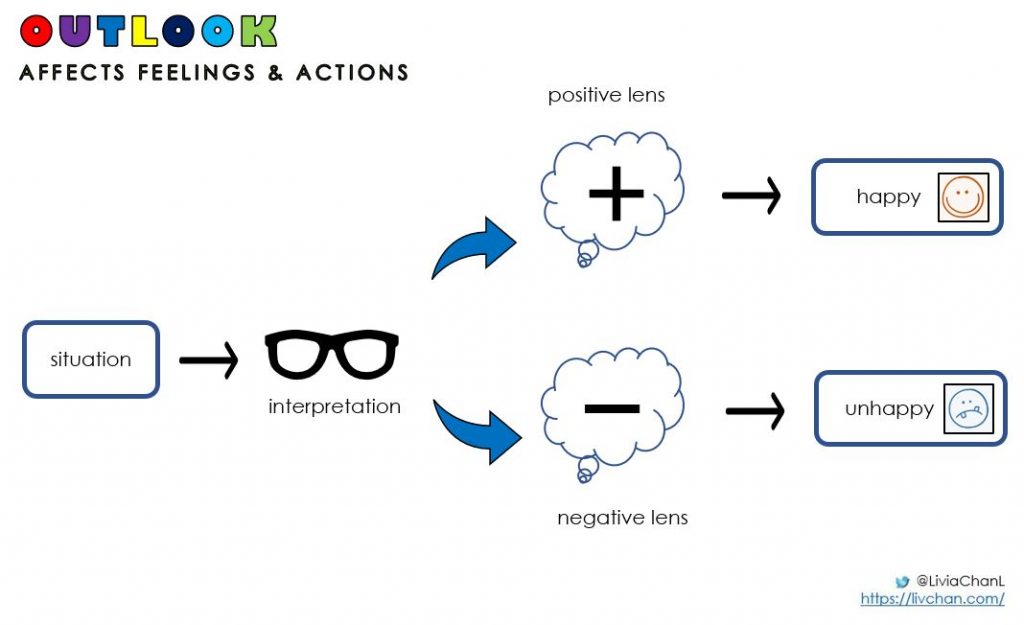
This is the science of calm. IF I am grateful and positive, THEN I can be calm.
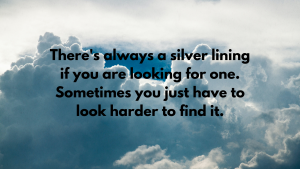
Last year, as I was placing the lunch I just heated up onto my desk, it slipped out of my hand and went all over the floor. Rice and veggies flew across my office. The delicious lunch that I was so looking forward to was only to be enjoyed by the food scraps bin. I calmly went to get some paper towels to pick up the food and every grain of rice. I was disappointed but not upset. Just grateful that I had a great lunch packed. I knew getting upset wasn’t going to serve me well. I needed to focus my energy on what I was going eat instead. It was one of those moments when I realized that I am indeed a calm person.
(What happened next? My principal and I made grilled cheese sandwiches together. It ended up being a special, memorable moment that would not have come to be if I didn’t drop my lunch.)
“A positive attitude gives you power over your circumstances instead of your circumstances having power over you.”
– Joyce Meyer
The Gift of Calm: Live and Learn
“Don’t cry over spilled milk.” You cannot change what has already happened. This is the go-to mantra I use often and the question I ask next is, “What will I choose to do about it?” Yes, it’s a choice and that is something I can control.
For decades, I practiced and learned to have a calm mindset. It’s very much like other skills that take time and patience to hone. Experience has shown me that when I deal with situations in a calm manner, I have better control over my thoughts, feelings, and ultimately how I come out of them. Train the brain to not react and to think things through first before responding immediately. I’ve learned to respond in a calm, positive way which better serves my overall well-being and preserves relationships that I’ve worked so hard to develop.
Also, I truly believe that how I live my life is a role model for those around me. If I demonstrate calmness, then my children at home and students at school can see how I deal with challenging situations. I explain my thinking and how I manage emotions. They can learn by listening and witnessing what I do. It’s my responsibility to respond impeccably with my words and actions.
“Children learn more from what you are than what you teach.”
– W.E.B. Dubois
The Gift of Calm: Mindfulness
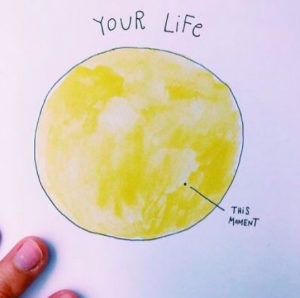
IMAGE BY MARI ANDREW
I know I can do hard things because I’ve done them before and I have come out of it okay each time. There is a science to that. Having this self-awareness grants me the wisdom to be mindfully calm in challenging situations like a boomerang. First, it is practicing mindfulness in the present moment. Next, it’s the ability to see beyond the immediate situation to go into the future to visualize that things will eventually simmer and improve in the end. Then I come back to where I am in the present moment. See the situation as just one moment in your whole life. Doesn’t that give you a different perspective? (See image that was shared by George Couros in his weekly Something Personal, Professional, and Profound – Email #101.)
I believe in ME and understand myself. Anchoring into my strengths, core beliefs, and values, I believe I can make things better. As I enter any disharmonious or undesirable situation, whether alone or with others, I know I have the skills, mindset, and sense of calm to bring calm in others. It’s contagious. How many times have we heard that yawns are contagious? Well, so is calmness! I think that’s why I’ve been told for decades that I have a calming effect and easily excitable kids are placed in my class often!
One thing that has helped me immensely is the strength of being solution-focused. I only have so much energy. That doesn’t mean I ignore the problem. I analyze the problem for the purpose of considering possible solutions. Then move forward with the best decision given the information I have at that time.
Also, I don’t take all things so seriously. It’s all about perspective! In the grand scheme of things, is this a big deal? I used to ask my young children when they were upset, “Is this a big deal or a baby deal?”
One last tip is to flip the script in your brain. Sometimes it helps to ask if things could be worse. Many times, it can!
Gift Better Challenge
The next time you notice emotions starting to brew either inside your brain or your body physiologically, try these things:
- Get to know yourself. Discover and choose the tools that are just right for you. How do you best find your sense of calm?
- Train your brain. Be patient and practice self-discipline. Practice calming your body and mind. Repeat words of affirmation. For example, “I feel calm. This situation is out of my control. I can control how I respond.”
- Take things in perspective.
- Flip the script in your brain!
- Notice your breathing. Intentionally take some deep breaths. Try box breathing: Inhale and hold for 4 seconds, exhale and hold for 4 seconds.
What are ways you find calmness? If we have not connected yet, I am looking forward to meeting you. Feel free to DM me on Twitter. Let’s chat!

